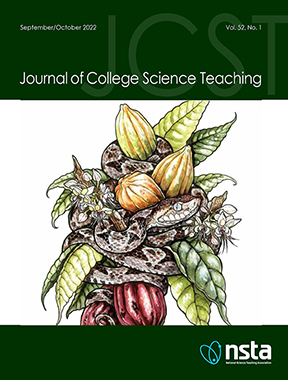Safety Blog
Safety Lessons Learned From the COVID-19 Pandemic
By Ken Roy
Posted on 2022-09-02

the poetry of science
Joyful Science
Science and Children—September/October 2022 (Volume 60, Issue 1)
By Sylvia Vardell and Janet Wong
teaching through trade books
Starting With Science
Science and Children—September/October 2022 (Volume 60, Issue 1)
By Christine Anne Royce
From the Field: Freebies and Opportunities for Science and STEM Teachers, September 6, 2022
By Debra Shapiro

Tech Talk
Joyful Science
Science and Children—September/October 2022 (Volume 60, Issue 1)
By Heather Pacheco-Guffrey
The early years
Preschoolers’ Science Learning Can Be Joyful—Using a Play-Based, Project Approach
Science and Children—September/October 2022 (Volume 60, Issue 1)
By Shelly Lynn Counsell
Editor's Note
Joyful Science
Science and Children—September/October 2022 (Volume 60, Issue 1)
By Elizabeth Barrett-Zahn

Volume 46, Number 1
Dynamic Earth

Volume 46, Number 1
Dynamic Earth

Volume 46, Number 1
Dynamic Earth

Volume 90, Number 1
Alternative Assessments in the Science Classroom
When I say “assessments,” what immediately comes to your mind? Tests, quizzes, and exams? Does it always have to be that way?
As you know, there are two main categories of assessments.

Volume 90, Number 1
Alternative Assessments in the Science Classroom
When I say “assessments,” what immediately comes to your mind? Tests, quizzes, and exams? Does it always have to be that way?
As you know, there are two main categories of assessments.




